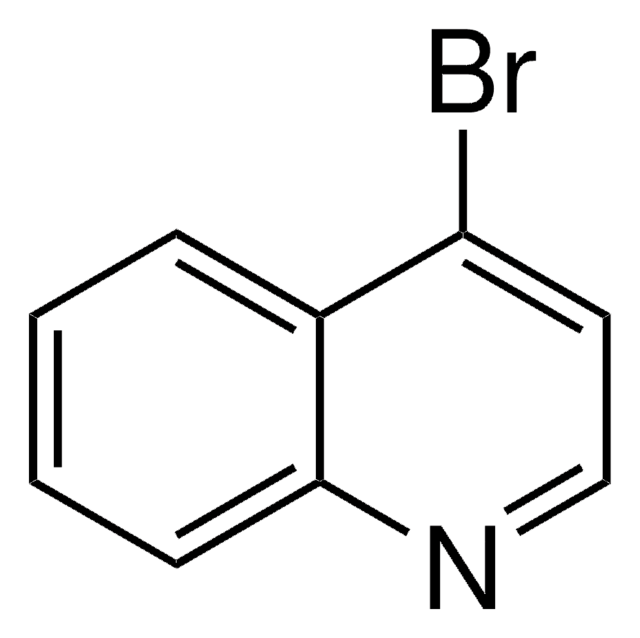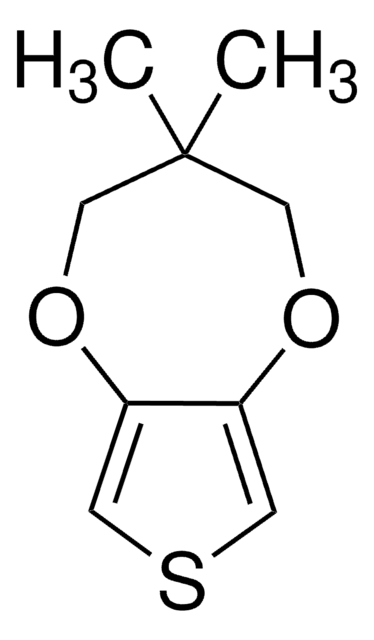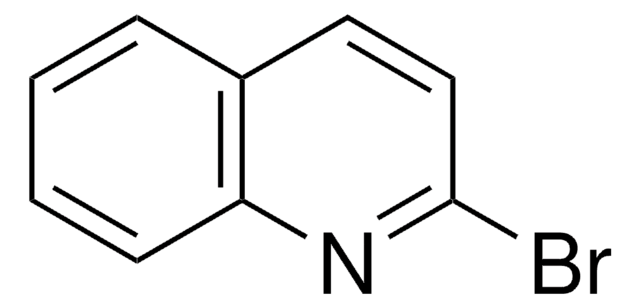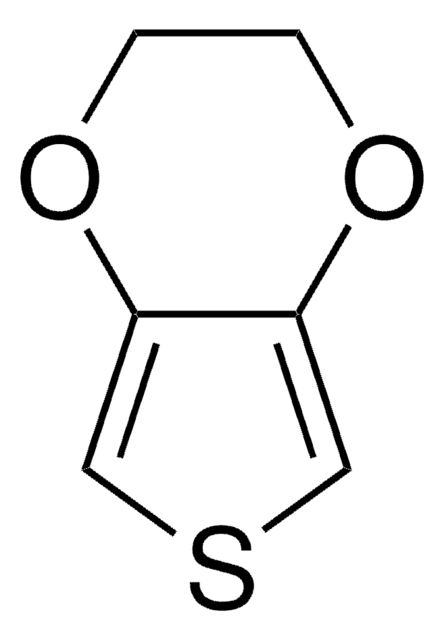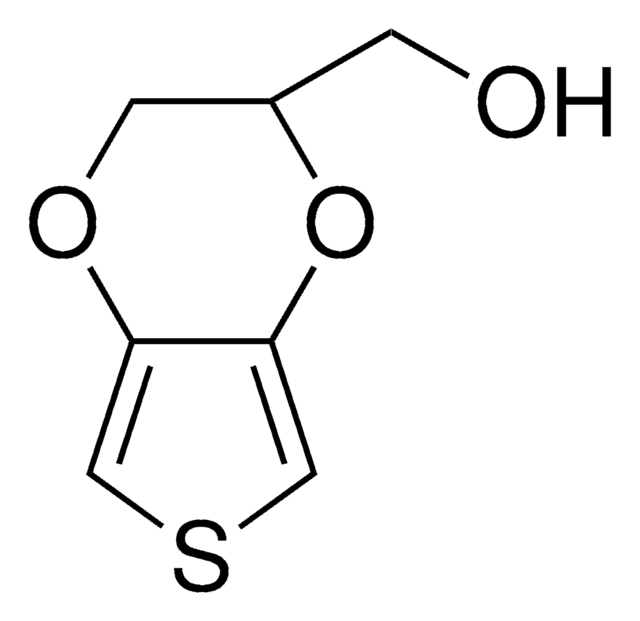おすすめの製品
形状
liquid
屈折率
n20/D 1.685
密度
1.374 g/mL at 25 °C
保管温度
2-8°C
SMILES記法
C1CSc2cscc2S1
InChI
1S/C6H6S3/c1-2-9-6-4-7-3-5(6)8-1/h3-4H,1-2H2
InChI Key
HPGNGICCHXRMIP-UHFFFAOYSA-N
詳細
3,4-Ethylenedithiothiophene (EDTT) is a dithiin based conducting polymer that is a sulfur analog of 3,4-ethylendioxythiophene (EDOT) that is majorly used in optoelectronic and electrochemical devices.
アプリケーション
EDTT can be electrochemically oxidized in acetonitrile to form poly(EDTT) films on the surface of the electrodes, which can be used in the fabrication of organic light emitting diodes (OLEDs) and organic photovoltaics (OPVs).
適用法令
試験研究用途を考慮した関連法令を主に挙げております。化学物質以外については、一部の情報のみ提供しています。 製品を安全かつ合法的に使用することは、使用者の義務です。最新情報により修正される場合があります。WEBの反映には時間を要することがあるため、適宜SDSをご参照ください。
消防法
第4類:引火性液体
第三石油類
危険等級III
非水溶性液体
Jan Code
729078-1G:
729078-VAR:
729078-BULK:
最新バージョンのいずれかを選択してください:
Mathieu, T.; et al.
Macromolecules, 38, 6806-6812 (2005)
Functionalized 3, 4-ethylenedithiathiophenes (EDTTs) as building blocks for poly (3, 4-ethylenedithiathiophene)(PEDTT) derivatives.
Blanco R, et al.
Tetrahedron Letters, 49(13), 2056-2059 (2008)
Randriamahazaka, H.; Sini, G.; Tran Van, F.
The Journal of Physical Chemistry C, 111, 4553-4560 (2007)
Redox doping behaviour of poly (3, 4-ethylenedithiothiophene)-The counterion effect.
Domagala W, et al.
Optical Materials, 33(9), 1405-1409 (2011)
Thierry Darmanin et al.
Journal of colloid and interface science, 466, 413-424 (2016-01-16)
Controlling the formation of surface nanostructures and nanotubes in particular is extremely important for various applications in electronic devices for energy systems, biosensing but also for the control of water adhesion. Here, we use a direct (without template) electropolymerization process
ライフサイエンス、有機合成、材料科学、クロマトグラフィー、分析など、あらゆる分野の研究に経験のあるメンバーがおります。.
製品に関するお問い合わせはこちら(テクニカルサービス)